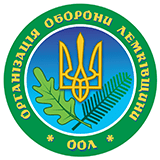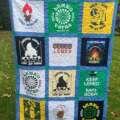This book was first published in Lviv in 1936, and only few copies made it to the USA.
Even though this book does not cover, with its contents, the entire history of Lemkivshchyna, but until a better work appears – we feel that it will be beneficial to release it among Ukrainians from Lemkivshchyna, on this side of the ocean.
By reading it, we will recreate in our memory and heart, our beautiful Batkivshchyna (Homeland) and its past, destroyed by the Polish occupiers.

To cast a handful of light on these Carpathian Lands – I wished a long time ago. Especially at a time, when all types of individuals not familiar with genuine Lemko subjects, with their peculiar lifestyle, cast their own opinions, on the origins of the Lemko “tribe”, I consider this short work to be unavoidable. Furthermore, strictly speaking, a scientific work dealing with history of Lemkovshchyna, has so far not been produced. Ukrainian Land on Lemkivshchyna – as seen through centuries; Lemkivshchyna, together with other Ukrainian regions, frequently changed hands; different nationalities climbed its hills, countryside was flexing under them, sometimes soaking in blood, Lemko was bending under the weight of foreign encroachments – but he was able to survive. Undoubtedly, our Lemko brothers were subject to different influences, and because of this process acquired certain foreign characteristics, but essentially speaking – Lemko from time immemorial remains a Ukrainian. I myself felt lost, but the truth and yearning after your own people, which I have preserved in my heart, brought me back to reality. I’m proud of my native Lemko region. I used to find in the Lemko “hut” enorm ous treasures. They consisted of: national honor, crystal clear characters, adamant hard will to compete in the name of greater Truth. I’m not looking for recognition or fame – because to prepare a cultural work for the Nation, I consider my moral public responsibility. – “Remember, don’t feel ashemed of your Ukrainian name!” that’s how taught us, at the Sianik (Sanok) gymnasium, our dear and unforgotten katekhit, father dr. Roman Reshetilo.
The aim of this modest work – is to be a partial solution to the wandering wheel, that this carpathian region finds itself in. My single wish; that this short work would lead others to a better scientific interest in the Western Ukrainian Lands. At this point I wish to thank dr. prof. Ivan Kripyakevich for sincere assistance; polite assistance to the direction of this work, and disclosure of appropriate sources, which helped in my assignment. I’m also mentioning, that dr. prof. Mikola Chubatiy, with his own endless love for work, read the entire manuscript, for which I offer him sincere thanks. Concluding, I’m grateful to my dear friend Ivan Kovalik (holder of a master degree) for translation of a manuscript, and assistance in typesetting. Separately, it’s my pleasant task to mention at this point, that for the decoration of this book with sent in photos, or ready negatives, contributed father Ivan Bugyera (Milik), f. Petro Andryeychik (Viyshkye), f. cat. Mikola Holovach (Boshko), f. Mikhaylo Horechko (Tseklinshka Volya), f. Karlo Sal’o (Mshana), f. Tyeodor Khomko (Kal’nitsya), f. Andriy Zlupko (Hladishiv), f. Mikhaylo Vesolovskiy (Hirova), f. Mikhaylo Horoshko (Yablonitsya), f. Orest Venhrinovich (Siniv), f. Vasil’ Seredovich (Turkns’ko), f. Ivan Kachmar (Zlots’kye), f. Aleksiy Davidovich (Hrab), f. Dmitro Stupak (Zindranova), f. Ivan Titar (Han’chova), well respected dr. Markyan Dzerovich, holder of master degree Lev Bukatovich, dr. Ya. Fal’kovskiy, Stefan Varkholyak, Mikola Maliy, Ivan Yaremko, dr. Bohdan Hnatevich and dr. Omelyan Volinets’.
Lviv, August 1935
Yulian Tarnovich
Table of Contents
- Western Carpathian Lands. What is Lemkivshchyna
- Echoes of struggle for freedom in Lemkivshchyna
Chapter 1
Western Carpathian Lands. What is this Lemkivshchyna?

Lemkivshchyna – that is a decent spread of land on both sides of western Carpathian Mountains from rivers Syan and Uzh to river Poprad. This spread of land is about 100 km long, and about 60 km wide. Here resides the Ukrainian tribe known as Lemkos. As I said, Lemkos are a Ukrainian tribe, sticking out farthest to the south west from the remaining land, that is inhabited by Ukrainians. Lemkos inhabit the space of 100 km of Carpathian foothills on both sides, along Carpathian mountains themselves. As part of Lemkivshchyna we include also these 16 villiges, north of Korosno: Blizyanka, with neighboring Hvozdyanka, Malivka, Barichka, Poloma, Yavirnik, Hvoznitsa, Zharnova, Nebil’tse, Bonarivka with Visotski Budy, Vanivka (Weglowka), Krasna, Oparivka, Ripnik, Chornoriki. These villages are surrounded by Polish villages, however they yearn more towards Lemkivshchyna and there is no doubt that earlier they were part of it. One look at the map, and we see that borders of Lemkivshchyna form a triangle. In the south east, Volosad Beskid guards the border, and an ethnographic dividing line runs along river Volosadka – northwards by Seredne Selo, includes little towns of Uhertsi and Lis’ko. Here it turns slightly in the north-westerly direction close to the village of Voloska Tiryava, Dobra, and Ilyucha. Then leads straight north to the town of Dunova, to the village of Yavirnika, where it makes a sharp turn alongside Kanchuha, Markovoi, Lan’tsut, Turinya, up to Ryashiv (Rzeszow – wm) railroad tracks, from Ryashiv leads to Pstruhova, Frishtak, Osibnitsya, Bich, Lunenin, Mohil’na. Along the rocky hills it crosses settlement Vil’shanka, across Noviy Sanch to Stariy Sanch. From there it heads for Korostenko, from Korostenko, it leaves on the right side, currently foreign to us villages. From Korostenko, it includes mountain Rabshtin, villigaes of Pivnichna, Zhubrik, runs along mountain Skalka, across Mushina, mountains Vapenni on Zimniy Shpil’, mountains Visokye, and Berestya. Takes a fancy hop close to villages of Mushinka, Tilich, Polyanki, Bilich, across Ostriy Verkh, Blikhnarsku Visoku, by hamlets of Rehetiv, Konechnu, Radotsinu, with the hill of Tisove, and the village of Tikhannya. From the mountain Yavoristi it climbs across Studeniy Verkh. Overtakes Dukla hills, villages of Zindranova, Cheremkha, Yaselko with the river Yasel’. It disappears in the Moshchanrets forest, runs along the border peaks across Vislichanskye uphills, then south-east up to the stream of Solinka, across peaks of Kizlata and Vyasela. It finally descends along the stream of Richitsy to Volosatka – Volosatskye uphills.
Lemkivshchyna lies roughly over a similar stretch of land on the southern slopes of the Carpathians; in the East from rivers Uzh with Ulichka, Laborets with Tsirka, Ondava valley, Tarcheva in the South, to the source of river Poprad, in the West. This triangle includes within itself, in the south-eastern corner areas by Balihorod, slightly to the north the town of Lisko, with its hamlets. Above it lie areas around Sanok (Syanichyna) and Rymaniv (Rymanivshchyna), that at an angle into lands known as mezhilaborets-Kalinivshchina. Nearby lie areas by Dyniv, with Bereziv, and Ryashiv to the north. The western part stretches in the north over the lands by Noviy Sanch – and slightly to the south areas around Stariy Sanch. The western corner is filled by areas around Korosten’ko, with which border areas around Horlitsi, and in the north areas around Hribiv. Along the longest, southern edge of this triangle lie: furthest to the west, areas around Mushina, with these villages sticking out furthest to the west – Bila Voda, Chorna Voda, Shlyakhtova, Yavirki; on the other side of the Carpathians with Osturna, followed by areas around Rehetiv, Korosno including Dukla, which merges in the east with the Rimaniv-Syanik district. The center of this Carpathian base consists of areas around Yaslo and Strizhkiv – in the north.That is more or less the ethnographic map of the western Carpathian lands.
Ukrainian linguist, Yosip Shemley, reports in his short research paper “Z badan ‘ nad gwara Lemkowska” (Research about the Lemko dialect) the border of Lemkivsh chyna, outlined on the basis of localities and their speech patterns at that tim e. He supplemented these notes with his own material, which he recorded in 1932, for the counties of Horlitsi and Yaslo.

He writes: (we cite according to tr anslation by Shemleyev). Except for furthest sticking to the west Osturnya, whic h is surrounded by villages with Polish population, areas populated by Lemkos start at the river Dunayets. Four villages: Shlyakhtova, Yavirki, Chorna Voda and Bila Voda, form a union with Lemko villages on the Slovak soil. From Zhehestov and Zubrik runs a line to the north, bypassing polish (Dr. P. Dombovski “Stosunki narodowosciowe ziemi sanockiej”, Lviv, 1926, reports that Lemkos lived there up to the XV th century) Pivnichna, across Mala Verkhovnya, Velika Verkhovnya, Rostok, Labova, to Ruska Koroleva, from here runs across Bohusha, Binchareva, Florinka, Vafka, bypasses polish Ropa, to Shklyarok and Shimbark (polish village, with the exception of hamlets, “Nad Izdom” and “Dolina”; crosses to Velika Mushina, and Mala Mushina, Rozdilya, Bodnarka, to Tseklinska Volya (with small Ukrainian population), to Klopitnitsya and Prehrimka. By Zhmihorod, the line continues through the following villages: Berezova, Skal’nik, Kuti, Mistseva, Hirova, Terstyana, Zavadka Rimanivska, (Voloski) and Polskiy Korolik, Balutyanka, Vil’ka, Korolivski and Shlyakhots’kiy Voroblik, and ends across partially Ukrainian Ladin’ to Bos’ko. From the (river) Visloka, by Bos’ko – the northern border of Lemkivshchyna runs, as it approaches the kneecap of river Syan, by Voloska and Sil’na Tiryava, in Syanichina; from here it turns south along the Oslava creek (slightly to the east of it) across villages: Stare Zahirya, Velikopole, Kulyashne, from Turin to Lupkiv Pass. The further border of Lemkivshchyna in the east (in the Zakarpatya) is the river Virava, the left tributary of Laborets’, (village of Zbiyne displays constant stress, except for some words with moving, or “passing” stress). All localities to the west of Virava, seperately from Laborets with the Ukrainian population of the former Zeplinsk, Sharisk and Spis’k komitats (administrative unit of Hungary, with local authority, corresponds to former Russian gubernia, exists since the X th century), belongs to Lemkivshchyna, and its population calls itself Lemaki (Lemki).”
This work taken together with another, research by professor dr Ivan Zilinski ” Lemkivska hovirka sela Yavirok” (Lemko dialect of the village Yavirok), based on the new research prove that the dialect of the Lemkos is without exceptions a Ukrainian dialect, and that a Lemko from time immemorial is a Ukrainian. Best example of this is the dialect in the village of Yavirok, even though this village is sticking a lot to the west, and a strong influence of Slovak and Polish languages is felt, in its conversational foundation, the dialect of this village belongs to the Ukrainian dialects. Besides this, even during the previous century, researchers, linquists such as Ivan Verkhratskiy, Ukrainian scholar, naturalist and philologist (1846 – 1919), researcher of the Galician-Ukrainian dialects, wrote “Pro hovir Halitskikh Lemkiv.” (About the dialect of the Galician Lemkos) Lviv, 1902, and many scientific papers dealing with ethnology (Greek for knowledge about peoples) and dialectology (Greek for science dealing with dialects), and also Olyaf Brokh, professor at the University of Oslo (Norway), norwegian philologist, active member of the Shevchenko Society, author of an excellent book dealing with slavic phonetics “Slavische Phonetik” and “Ocherku fizyologii slovyanskoy ryechi”, described dialect of the village Ubli in the Zakarpatya – both prove in great detail, that the Lemko dialect, originates from the Ukrainian language, and it’s within this field, that it should be researched.
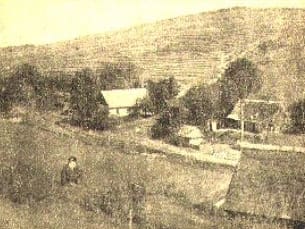
From the cited works of I. Shemley, professor I. Zilinski, professor I. Verkhratskiy, and professor O. Brokh, taken together, that is a proof, that Lemkivshchyna from time immemorial is part of the Ukrainian soil.
Chapter 21
Echoes of struggle for freedom in Lemkivshchyna
Before World War I, Lemkivshchyna, that beautiful corner of Ukraine, was so clouded by moscophilism that it seemed it would be completely lost to the Ukrainian idea. For many years Lemkivshchyna had been nurtured in the moscophile spirit by various, unconscionable agitators and it put all the hopes of its unenviable fate in Russia’s might. Ukrainians were very poorly organized in Lemkivshchyna, in addition they exercised only a small influence on the people. Whenever they tried to distribute their periodicals and books, opponents always found a way to paralyze their efforts. In this, these opponents held nothing back, but hammered such hatred not only to the Ukrainian idea, but to the very name Ukraine, into unenlightened people that to this day it is difficult for the people to grow out of this brain-washing.
It is also true that Ukrainians either took very little interest in Lemkivshchyna or took no interest at all. They did not try to get to know their brothers to the west, nor influence them, nor nurture them in the Ukrainian concept. How little our Galicia concerned itself with Lemkivshchyna we see from the fact that when Ukrainians were being gathered into a newly arisen Ukrainian republic, Lemkivshchyna was spoken of fleetingly and unclearly. Lemkivshchyna had been saddled almost exclusively with moscophile priests and teachers. For some reason, Ukrainians were afraid to settle among the Lemkos. They were inhibited by the Lemko dialect, the great distance from eastern Galicia and the inaccessibility of the mountains.
There were only a few more active individuals, like the late Yavorsky in Novy Sanch, Maritchak in Yaslo and the late Rev. Kisilovsky in Hrab, who carried on educational work as well as they were able to. But there were too few of these workers. So, the moscophiles were able to exercise exclusive influence over the people and were able to strengthen their own ideas in them. Their main objective was the establishment of Russian Orthodoxy in the villages of Lemkivshchyna, which had as its goal the destruction not only of the Ukrainian church but of the nation and to strengthen even further the leaning of the people to the all-powerful tsar.
Then the First World War broke out. Having lived through the great desolation which the war brought with it, the war also served to stymie the local population’s movement toward moscophilism. Shrewd agitators who tried all means to propagate moscophilism prudently disappeared from the scene. Their students, the people, convicted of treason were left behind in Austrian death camps. Many others left with retreating Russian troops and were scattered, primarily throughout Ukraine. There they recognized that Ukrainians, by their speech and customs were the same as they themselves and that the Great Russians, who they had felt a kinship with, were distant and unlike themselves. These people looked for the establishment of a Ukrainian state, some worked in Ukrainian organizations. Indeed, some even fought with the Ukrainian army.
This movement must have influenced their consciousness and having returned home they brought with them a change in their former moscophile views. Also, the unconscionable work of moscophile provocateurs in Russia removed their enthusiasm for the much feted “unity” of the Galician nation with the Great Russian nation. In addition, Russian troops, among whom were no small group of Ukrainians irrevocably changed those who had remained at home. Ukrainian soldiers, although not so sure of their own uniqueness still in all felt that the Lemkos were closer to them than their Russian comrades. Their speech and appearance united them. Even Russian commanders made a distinction between Lemkos and their own soldiers. They assured the Lemkos that they were “khokhly”, just like the “khokhly ” that served in the Russian army; that they were quite distinct from the Great Russian “katsapy”. These names, used to signify differences between Ukrainians and Russians, have remained in use to this day.
These ” khokhly ” even taught our people Ukrainian songs, among which the song, “Kateryno, vrazha dochko, shcho ty uchynyla”, has long since been sung by young Lemkos. They kept company with our people rather than with their own “katsap” army buddies.
The influence of Ukrainian units of the Russian army in Lemkivshchyna plus the enlightenment of our people who returned from war-time Russia could not help but contribute to the diminution and weakening of the old moscophile views of the Lemkos. Lemkos began to take more interest in the Ukrainian movement and hoped that Ukrainians, unlike previously, would take more interest in them. These hopes were developing while the world war was drawing to a close.The initial hope of Lemkos developed from the establishment of peace talks at Brest-Litovsk between the young Ukrainian republic and surrounding countries. In some villages of Lemkivshchyna this was an occasion for solemn Divine Liturgies to be served with great participation of the people. Lemkos started to believe that the new state would take the poor, war-ravaged and forgotten Lemkivshchyna under its wing. From that moment Lemkivshchyna was flooded with many different rumors, that would build up the Lemkos’ hopes, only to dash them again. At the end of October, 1918, the Lemkos heard that Emperor Charles published a manifest in which he promised a restructuring of Austria into national states. Among others, a Ukrainian state would arise in eastern Galicia; that each nation would elect a popular council which would decide its own aspirations for statehood. They heard that Ukrainians in Lviv declared an independent state, encompassing all the territory inhabited by Ukrainians including Lemkivshchyna. And in the beginning of November, 1918, “reliable” reports criss-crossed Lemkivshchyna, such as one that Ukrainian troops, having occupied Lviv, Striy and Drohobych were coming to the aid of Lemkivshchyna and the Ugro-Rusyns, some by way of northern Hungary and others from Syanik. This rumor was very characteristic of Lemkos’ hopes. Thanks to it, in one village in Yaslo county, something on the order of a militia was formed, which planned to join up with the advancing Ukrainian army. Placing hope on future aid, a flood of councils and public meetings began, which took place in almost every village. However, the old provocateurs who again appeared in Lemkivshchyna took advantage of these meetings. They saw the present sympathies of the people to the Ukrainian movement and understood that the nation, which after the suffering in Thalerhof and Russia, would turn away from them. They, therefore, adroitly, took this movement into their own hands. They immediately joined up with the Ukrainians and pretended to be great friends. Because at that moment they could not afford to irritate them. The people heard about the battle for the minds of Ukrainians being waged in eastern Galicia and realized that the old slogans of the agitators; that the Ukrainians and the Poles are all the same was just an evil trumped-up idea. In the end the Ukrainians extended their newly established state into Lemkivshchyna.
The public meetings began in Horlytsi county. It was immediately asked there not to divide the people into parties, but to work toward their goals as a united front. And it seemed that the people would abandon their old road and turn completely to the Ukrainian state. However, it didn’t work out that way. Agitators, seeing that Ukrainians in Lemkivshchyna were weak and that there was no hope of strengthening the Ukrainian state did an about-face. With all their might they began to destroy the Lemkos’ sympathy to the Ukrainian idea, and began to draw the nation to themselves by means of the old demagoguery as well as by using new slogans; ” that the Ukrainians broke Russia apart, that they were only pretending to battle the Poles, that they betrayed the Lemkos to Thalerhof and so on”. And so that it would seem that they were doing something for the nation, they coined a slogan that Lemkivshchyna could not by any right belong to Poland.From this flood of public meetings it is worth mentioning at least a few to show how moscophile agitators were destroying the expectations of Lemkos and their sympathies toward the Ukrainian idea. On November 17, 1918 an informational public meeting took place in Svyatkova, at which a moscophile agitator, Sobin, tried to break up the crowd, dividing them into moscophiles and Ukrainians.
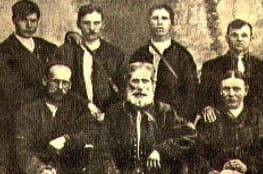
When those gathered there brought it to his attention that at that time it was not advisable to divide the people he became irritated and screamed that “there is no Ukrainian state in Russia or in Galicia because the whole populace considers itself Rusyn (Ruskym)”. However, upon seeing opposition he proposed a main public meeting to be held in Hladyshiv, where he expected his work would come to an end. On November 27, 1918 the aforementioned public meeting took place in Hladyshiv. Ukrainians from Horlytsi and Hrybiv counties invited delegates by letter, so that as many Ukrainians as possible would be able to take part. Unfortunately, this public meeting became only a moscophile demonstration. There were Ukrainians in the committee, however they were not permitted to speak. A host of assembled agitators of a different mind-set glorified their own ideas and praised the resolution, the content was which stated that Lemkivshchyna could not belong to Ukraine, but only to Great Russia and that she should send her own delegate to the peace conferences. In order to reach this goal, five members were to be chosen in each village but that in all matters they would have to defer to a Rusyn Council in Hladyshiv. A so-called Lemko Republic arose. In the villages, elections were held for the aforementioned members, who collected a pool of money to be used for the delegate’s trip. Even the Rusyn Council itself did not know where he would be sent. A further election of a so-called “village court” was also arranged in each community. This “village court” was to be composed of four members who after having taken an oath in church were to adjudicate minor civil offenses and so forth.
The Polish authorities tolerated the public meetings from the beginning as well as the establishment of the Rusyn Council, because the Polish government was very weak and disorganized, as well as the fact that the expected battle between the Ukrainians and moscophiles would turn out to their own benefit. However, already by December of 1918 Poland began to look more closely at and took more interest in Lemkivshchyna. They sent their “legionnaires” there, customs-border guards, they sent out draft notices for the Polish army, asked for elections of various committees and so on.
In the meantime former captives were making their way home from Russia by various routes through Galicia. Many of them had been in the Ukrainian army and no longer wanted to serve, but were fleeing home as quickly as possible, wearing blue-yellow insignias on their caps and bringing varied news back concerning the course of the Polish-Ukrainian war.
The people got news by way of Hungarian Ukraine that in Stanislaviv on January 3, 1919 a union of all Austro-Hungarian Ukraine with Great Ukraine had been proclaimed. Again the people took heart, because they believed Lemkivshchyna was to take part in that union and that the help of the young Ukrainian state was not far off.
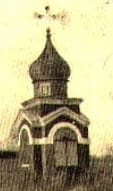
Having seen this, the moscophile “bearers of bad news” began to campaign for the division of Lemkivshchyna, for the time being, to Czechoslovakia.
The Rusyn Council held some secret meetings and decided to send a delegation to Czechoslovakia with a request for annexation. Various rumors were circulated concerning the tour of these delegates; that Czechoslovakia would take the Lemkos under its wing if Ukraine would agree to it, but was not receptive to a republic for Lemkos. Even the main delegate, Rev. Yurchakevich confessed that it would be for the best if the Lemkos joined with the Ukrainians of eastern Galicia. There was also some discussion that Czechoslovakia would be receptive to annexation of Lemkivshchyna to its own republic until Russia rebuilds following the war! Such a desire was indeed put forth by the Rusyn Council in public meetings in Florynka, Brunary near Hrybiv, in Krinitsya and in other localities.
On account of this, Polish publications raised a commotion, directing the attention of Polish authorities to the work of “good-hearted, honest old-Rusyns”. In a report from Novy Sanch, “Czechoslovak-Rusyn Intrigues in Lemkivshchyna”, the Krakow Illustrated Courier, having presented the agitation of the old-Rusyns for annexation of Lemkivshchyna to theCzecho-Slovak republic, with the help of a proclamation by Czech officials distributed under the title, “Hlas ruskoho lidu”(Voice of the Rusyn People) and published in Czech and Ukrainian, asks that the Polish government would take an interest in this agitation because, “it is unheard of that in our own country, groups of dissidents and seditionists of all kinds would roam the entire Sub-Carpathian region without punishment.” At the head of the Rusyn-Czechoslovak action stood the ambassador to the Galician Seym (Sejm), Kurilovich, a notary from Syanik, a lawyer from Mushyna, Dr. Hassay who as an old-Rusyn man trusted in the Czech government in Prague, a former emissary to the Hungarian Seym, Dr. Beskid from Pryashiv, the editor of “Holos Ruskoho Naroda”(Voice of the Rusyn People) in Pryashiv, Dmitro Vislotski and others. A proclamation from February 9, 1919 declares in the name of Lemkos that “from today forward Lemkivshchyna is to be considered an autonomous part of the Czecho-Slovak republic.” And the Pryashiv “Voice of the Rusyn People”, the organ of the Carpatho-Rusyn National Council in a report from Lemkivshchyna ” in the most definitive way” protested against “the division of Carpatho-Russia and demanded on the basis of a national vote the right of self-determination in the northwest Carpathians, that is to say Lemkivshchyna”.

“Soul shepherding” was conducted by father Stepan Tarnovich. This plan for a plebiscite interested our Lemkos, however, it was surprising that Hungarian Ukrainians didn’t desire such a plebiscite in Czechoslovakia. In fact, there was some talk about annexing Hungarian Ukraine to Great Ukraine, especially since Ukrainian troops had already occupied Marmorosh-Szighet and Homonna.
However, these were only rumors of which there were many at that time. Meanwhile, Lemko delegates traveled around Czechoslovakia, conferring, bargaining and feasting while the people back home filled themselves up with rumors, waited and were left in the dark. In the meantime, Polish rule was reinforcing itself in Lemkivshchyna.
Border villages were immediately planted with so-called “legionnaires”, who together with customs-border guards, were not only supposed to guard the borders against contraband and smugglers, but were also supposed to carefully scrutinize the agitation, which was flowing from that area. Also, punitive raids were sent into villages in which leaders of the Czech orientation were headquartered and with one swipe they were liquidated.
Still, for a time, hollow rumors circulated among Lemko villages that the Lemkos would be annexed to the Czecho-Slovak republic. This news originated in America, which also was concerning itself with the fate of Lemkivshchyna.Meanwhile, the Ukrainian army, exhausted from lop-sided battles with the Bolsheviks, Poles, Hungarians and Romanians, decimated by typhus, without the necessary amount of arms, dependent only on its own strength, finally had to reduce itself and retreat beyond the Zbruch river. In eastern Galicia Polish regiments advanced triumphantly. The Lemkos felt these failures and lost all hope, which they had been living with that Ukrainians, having conquered eastern Galicia would take up the Lemko cause. Equally, the expectation that Lemkivshchyna would be annexed to Czechoslovakia fell by the wayside. Agitation was stifled and leaders of the Czech organization hid themselves… In “Ukrainskomu Skitaltsi”(Ukrainian Wanderer), Liberets, 1920. No. 4, we find valuable materials written by Volodimir Vinohradski “Z dniv borot’by…”(From the Days of Battle, Memoirs of the November Cataclysm in Balyhorod and Lisko).
Again from a report by Dr. Mikhailo Filets, “Z dorohi zi Zakopanoho do L’vova” (From the Road from Zakopane to Lviv), we find out that between November 1 and November 4, 1918 news was received from Novy Sanch that Ukrainians from the 10th infantry regiment had been disarmed and interned, which meant the internment of Ukrainians in Zakopane. Ukrainian sergeants were determined to regain authority over the 10th regiment, however as a result of informants, the Poles preceded, disarmed and interned them. This happened the night of November 1, 1918. About 800 infantrymen and 35 commanders were interned then. But they were soon freed. The commanders, scattered widely about Lemkivshchyna, began to educate the Lemkos and inform them about the situation which existed in the eastern part of the country. In Syanik the Poles took authority into their own hands. Zahirya, on the 7th of November, 1918 found itself in Ukrainian hands. Poles and Jews were admitted to the police force. The Poles there comprised a vanishing minority. The police force was organized by social democrats. Finally, the actions of the “Regional Commissariat of Vyslik and Komancha” were very important. The movement in Lemkivshchyna, although it did not bring about the expected results, had as a silver lining, the breaking down of long-lastinggainst Ukrainian orientation. Ukrainian hopes and aspirations dating from these great times were not in vain… The people clamor for Ukrainians books and periodicals which they never heard of or saw before. This all led to the fact that Lemkivshchyna, in spite of Orthodoxy, in spite of difficult circumstances, would enter into the pure waters of a national rebirth. This movement encompassed all Lemkivshchyna and no power could have torn it apart.
Source: Lemkivshchyna – illustrated history
http://www.interklasa.pl/portal/dokumenty/r_mowa/strony_ang/ludzie/lemki1.htm

